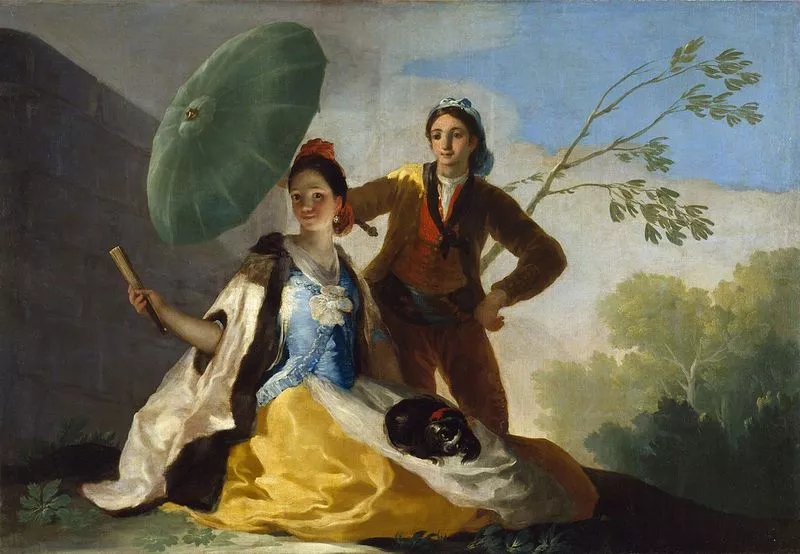BIOGRAPHY

Francisco José de Goya y Lucientes was born in Fuentedetodos, a village in Zaragoza, on 30 March 1746. He studied painting from an early age under José Luzán, a famous painter from Zaragoza. He tried to earn a scholarship in Rome, but he failed, so he relocated at his own expense to Italy. When he returned, in 1771, he oversaw the gilding and most of the ornamentation during the rebuilding of the Basilica of Our Lady of the Pillar (Santa María del Pilar), the principal cathedral of Zaragoza.Goya married Josefa Bayeu in 1773. Thanks to her brother, the painter Francisco Bayeu, he earned a commission for a series of tapestry cartoons for the Royal Tapestry Factory.At the same time, Goya was acquiring fame as a portrait painter, what allowed him to move up in his career as a painter. In 1789, he was appointed court painter to Charles IV and the following year he became First Court Painter. These posts provided him with good contacts, money and prestige. Among his most famous portraits from this period are Gaspar Melchor de Jovellanos and Charles IV of Spain and His Family.At some time between late 1792 and early 1793, Goya suffered from a serious illness that left him deaf. From then on, the direction and tone of his work changed, becoming progressively darker and pessimistic.The War of Independence (1808-1814) also marked his life and work, as it reflects the cruelty and horrors that took place then. The protagonists of his paintings and etchings belonging to this period are anonymous persons who suffered the violence provoked by the conflict of war. Among them, we find The Second of May, The Third of May and the series of etchings known as The Disasters of War.His pronounced deafness and isolation lead him to devote his late period to a more personal style culminating in the Black Paintings, applied on oil on the plaster walls of his house “La Quinta del Sordo”, located on the bank of the river “Manzanares”. These paintings show his disillusionment and despair, also seen in the series of etchings called Los Disparates.After the War of Independence and his substitution as a Court Painter, and due to the political situation in Spain (back to absolutism), Goya decided to retire to France, where he died in 1828 aged 82.
Get the full experience in the app
Discover 6 hidden gems with captivating audio stories, explore top-rated nearby hotels, find affordable flights and enjoy the best local eats - all in the Cya On The Road app.
Download now from the App Store or Google Play and search for BIOGRAPHY.